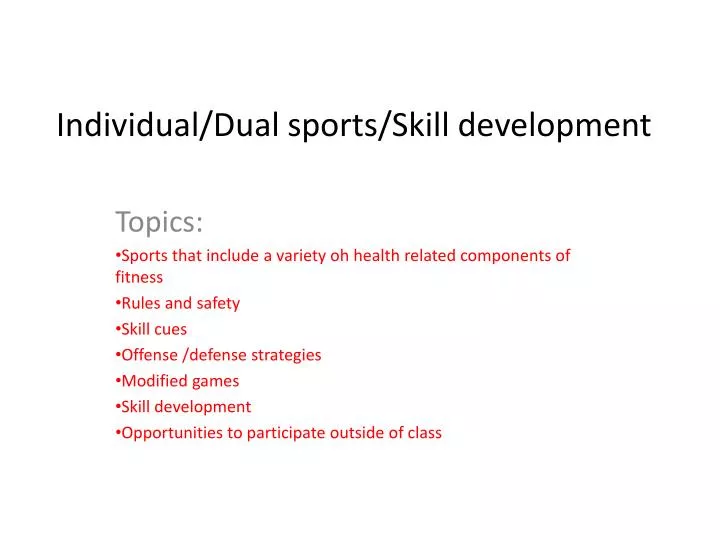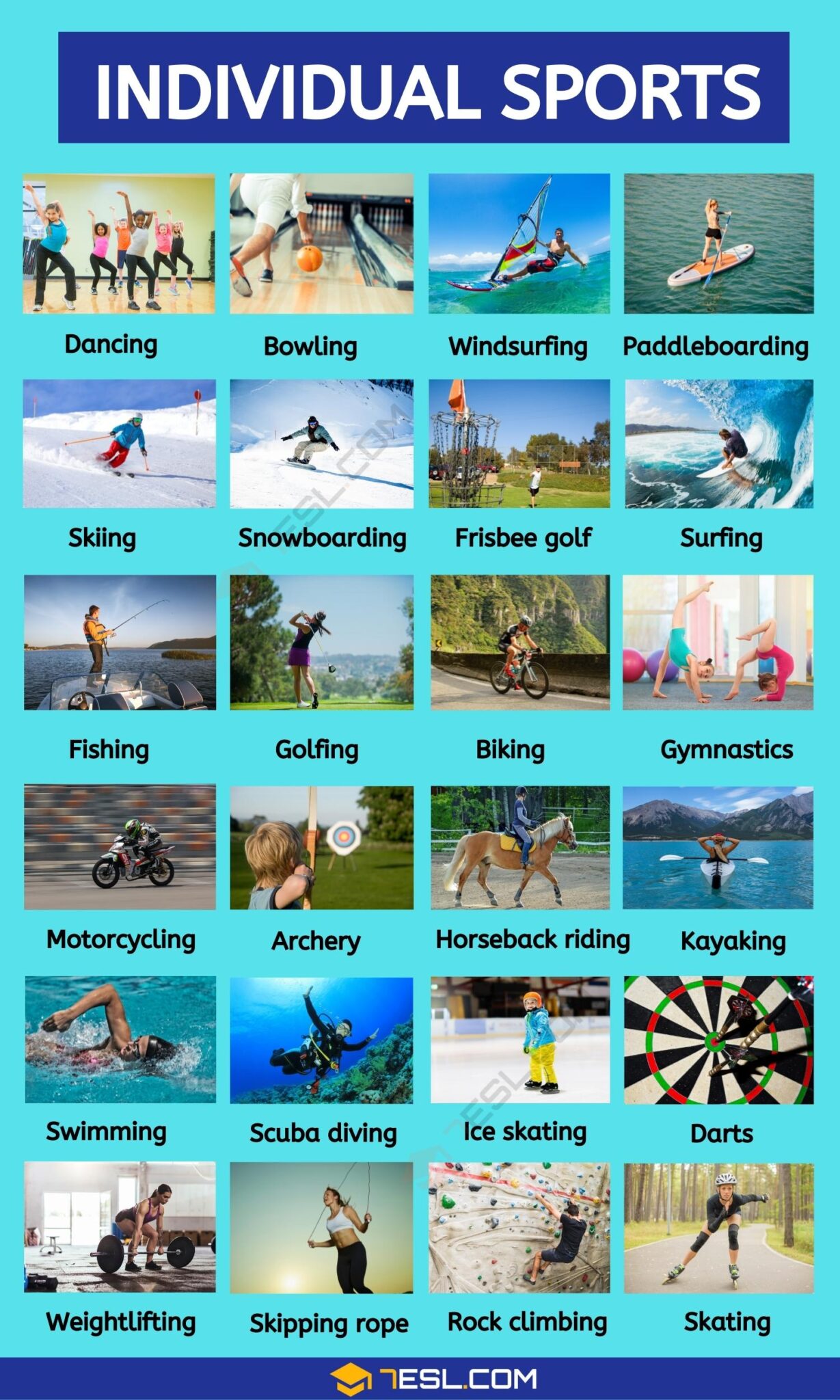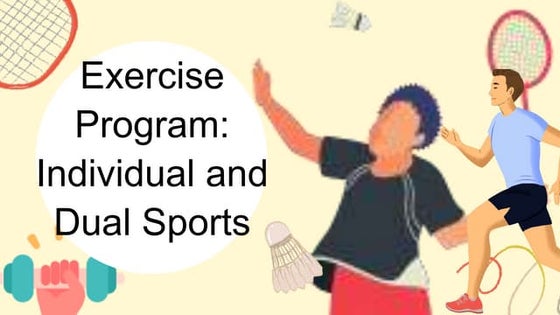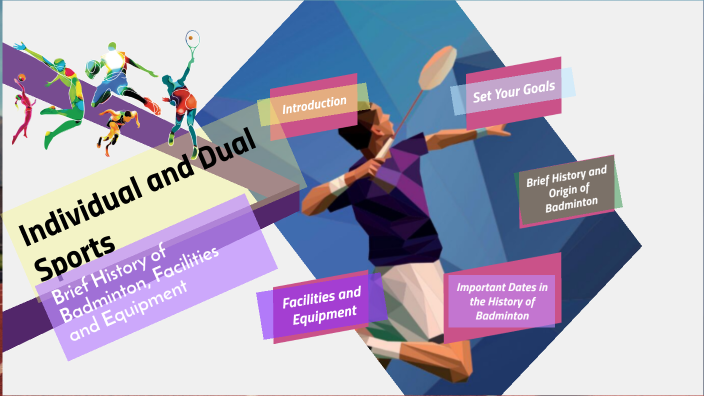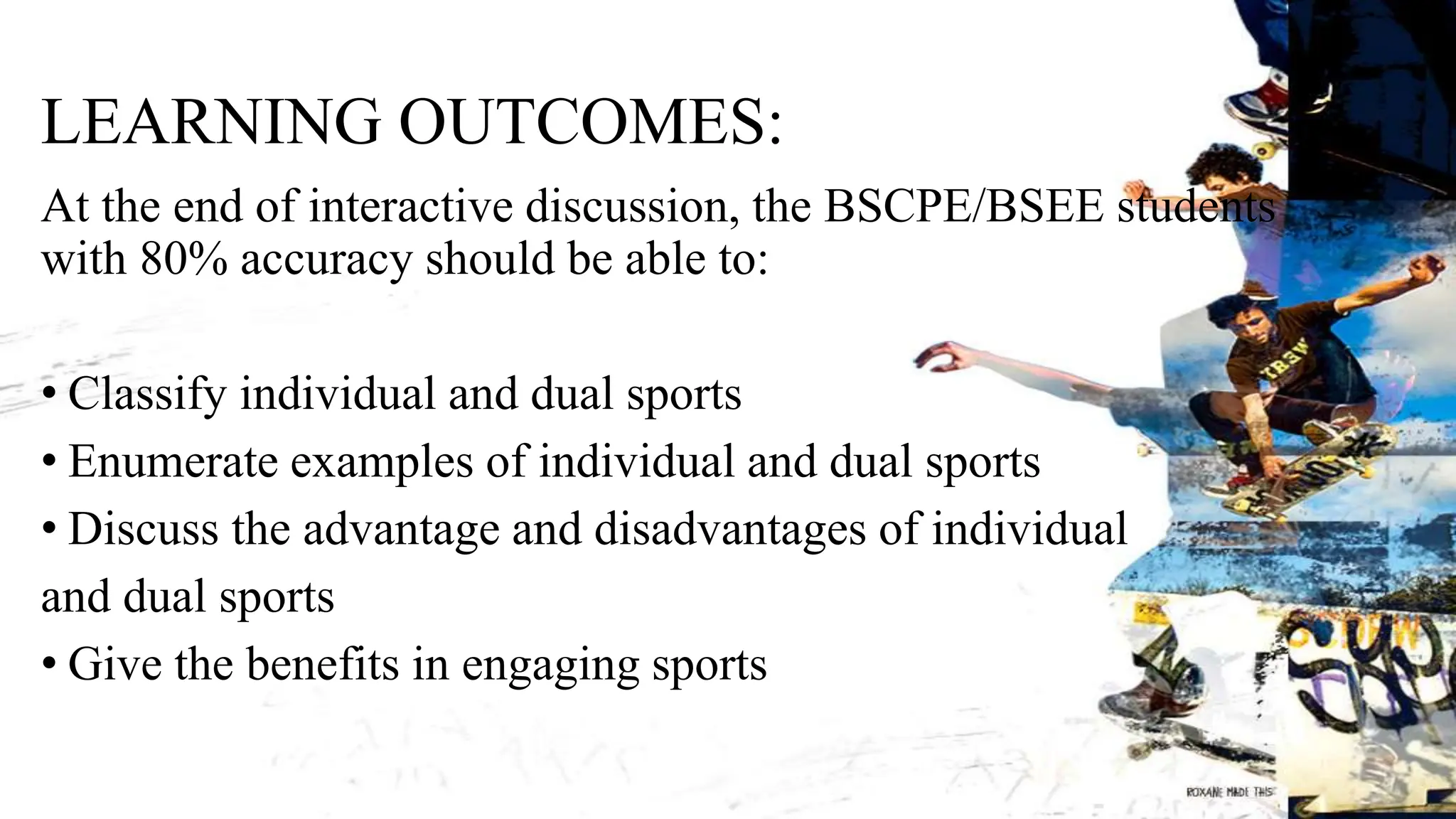Individual Vs Dual Sports And The Components Of Each
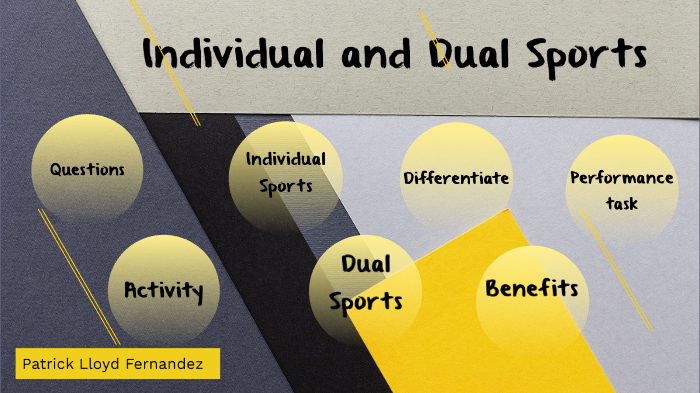
The roar of the crowd, the sting of defeat, the sweet taste of victory – these are emotions deeply intertwined with the world of sports. But the experience of these emotions can be vastly different depending on whether an athlete stands alone in the arena or fights alongside a teammate. The age-old debate between the merits of individual versus dual sports continues to resonate, influencing athletes, coaches, and enthusiasts alike.
This article delves into the nuanced differences between individual and dual sports, exploring the unique components that define each category. We'll examine the psychological impact, the training methodologies, the skill sets required, and the overall experience of participating in each type of sport. Through careful analysis and reference to credible sources, we aim to provide a comprehensive understanding of the distinct advantages and disadvantages offered by individual and dual sporting pursuits.
Defining Individual and Dual Sports
Individual sports, by definition, involve athletes competing independently. These sports hinge solely on an individual's performance, without reliance on teammates. Examples include tennis, swimming, gymnastics, and track and field events like the marathon.
In contrast, dual sports require two athletes to collaborate and compete as a unit. These sports necessitate coordinated effort, communication, and a shared strategy. Common examples include doubles tennis, beach volleyball, pairs figure skating, and rowing (pairs or doubles).
The Psychological Landscape: Solitude vs. Shared Responsibility
The psychological demands of individual and dual sports are fundamentally different. Individual athletes often experience intense pressure and accountability. The athlete alone bears the weight of success or failure.
Dr. Alan Goldberg, a renowned sports psychologist, highlights the intense mental fortitude required for individual sports. He notes that "athletes in individual sports need to develop a high degree of self-reliance and mental toughness to cope with the pressures of competition."
Dual sports, on the other hand, offer a buffer against individual pressure. The responsibility is shared, and athletes can draw strength and support from their partner. This shared responsibility can alleviate anxiety and promote a sense of camaraderie.
A study published in the Journal of Sport and Exercise Psychology found that athletes in dual sports reported lower levels of anxiety compared to their individual sport counterparts. This suggests that the presence of a teammate can provide a sense of security and reduce the psychological burden of competition.
Training and Skill Development: Specialization vs. Complementary Skills
Training for individual sports often involves a highly specialized approach. Athletes focus on honing their individual skills to peak performance. This might involve countless hours of repetitive practice and intense physical conditioning.
Dual sports necessitate a different training paradigm, with emphasis on synergy and coordination. Athletes must not only master their individual skills but also learn to complement their partner's strengths. Teamwork and communication become paramount.
Consider the example of doubles tennis. One player might specialize in serving and volleying, while the other excels at baseline play and returning shots. Their training must then focus on seamless transitions and strategic positioning to maximize their combined strengths.
Strategic Considerations: Individual Tactics vs. Collaborative Strategies
In individual sports, strategic decisions are often made in isolation. Athletes must analyze their opponents' weaknesses and adapt their tactics accordingly. This requires a high degree of self-awareness and tactical acumen.
Dual sports demand collaborative strategic planning. Athletes must communicate effectively and coordinate their movements to execute complex strategies. This requires a shared understanding of the game and the ability to anticipate each other's actions.
"The best doubles teams are those where the players think as one," states Patrick McEnroe, a former professional tennis player and doubles specialist. He emphasizes the importance of anticipating your partner's moves and reacting instinctively to changing situations.
Advantages and Disadvantages: Weighing the Options
Individual sports offer the advantage of complete control and autonomy. Athletes are solely responsible for their successes and failures, fostering a sense of ownership and accomplishment. However, this also means bearing the full burden of pressure and criticism.
Dual sports provide the benefit of shared responsibility and mutual support. Athletes can learn from each other and draw strength from their partnership. However, this also means navigating potential conflicts and compromising on individual preferences.
Furthermore, the success of a dual sport partnership depends on the compatibility and chemistry between the athletes. A mismatch in personalities or skill levels can hinder performance and create friction within the team.
The Role of Coaching: Individualized vs. Team-Oriented Guidance
Coaches in individual sports typically provide highly individualized guidance. They tailor training programs to the specific needs and strengths of each athlete. The focus is on maximizing individual potential and addressing specific weaknesses.
In dual sports, coaches play a crucial role in fostering teamwork and communication. They work to develop synergy between the athletes and create a cohesive team dynamic. This often involves conflict resolution and the development of shared strategies.
Looking Ahead: The Future of Individual and Dual Sports
Both individual and dual sports will continue to hold a significant place in the sporting landscape. The choice between them often depends on an individual's personality, preferences, and goals. There is no single "better" option.
The rise of esports has further blurred the lines between individual and team-based competition. Many esports involve individual players competing against each other, while others require teams to collaborate and coordinate their efforts. This trend suggests a continued evolution in the definition of sports and competition.
Ultimately, the decision to participate in an individual or dual sport is a personal one. By understanding the unique components of each category, athletes can make informed choices that align with their strengths, preferences, and aspirations. Regardless of the chosen path, the pursuit of excellence in sports offers invaluable lessons in discipline, resilience, and teamwork.






